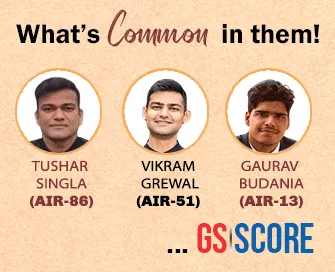

8th May 2025 (11 Topics)
Context
India and the United Kingdom finally signed a Free Trade Agreement (FTA), after nearly three years of negotiations. The deal comes at a time when global trade faces uncertainty due to rising tariffs, particularly those initiated by the US. It marks a major post-Brexit milestone for the UK and is expected to boost bilateral trade significantly.
Key Takeaways from India–UK FTA
- Trade Expansion Potential: The agreement is projected to enhance bilateral trade by approximately British Pounds 25.5 billion annually by 2040. In 2024, total trade stood at British Pounds 42.6 billion, indicating a substantial opportunity for growth.
- Tariff Rationalisation
- Spirits and alcoholic beverages: Tariffs on whisky and gin are to be gradually reduced from 150% to 40% over a decade—offering relief to the UK's Scotch whisky industry and Indian consumers alike.
- Automotive sector: Tariffs exceeding 100% on select UK vehicles will be lowered to 10% under a quota-based mechanism.
- Other goods: Concessions have been extended to items such as medical devices, aerospace components, cosmetics, chocolates, biscuits, lamb, and salmon, many of which are core to UK’s export basket.
- Movement of Professionals: India sought liberalisation in professional mobility, especially for its IT and healthcare workforce. The final arrangement is modest, allowing for approximately 100 additional annual visas, indicating limited progress in this domain due to the UK's political sensitivities around immigration.
- Regulatory Challenges Addressed: Negotiations also confronted and eventually navigated contentious issues such as the UK's proposed carbon border tax on high-emission imports (notably metals), which could have disadvantaged Indian exporters. The two sides arrived at a mutually acceptable understanding.
Significance for India
- Strategic Market Diversification: The agreement enables India to further its quest for alternative trade partners and reduce strategic vulnerability, especially in light of geopolitical frictions and China-centric supply chain risks.
- Support for Domestic Manufacturing: By easing access to the UK market for Indian goods, the FTA is expected to create a more favourable environment for initiatives such as ‘Make in India’, particularly in textiles, pharmaceuticals, engineering goods, and agri-products.
- Post-Brexit Opportunity Realisation: For India, this FTA serves as an opportunity to gain more predictable access to the UK market, especially as London seeks to deepen economic linkages beyond the European Union.
- Muted Gains in Services: According to the Global Trade Research Initiative (GTRI), the deal may not substantially transform India's export landscape, since many Indian products already enter the UK with low or zero tariffs. Gains in the services sector, which remains a core Indian interest, appear rather limited.
What is a Free Trade Agreement (FTA)?
|
PYQQ. Consider the following countries: (2018)
Which of the above are among the ‘free-trade partners’ of ASEAN?
Solution: (c) |

